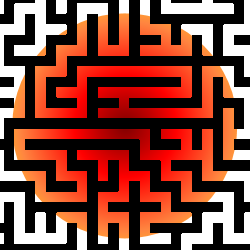How kinesthetic folks learn Math
Lesson Plans > MathematicsHow kinesthetic folks learn Math

I’m not a Math teacher yet I feel I’m highly qualified to write on this topic. I am a lifelong Math learner and I am highly kinesthetic. Being kinesthetic means I am highly sensitive, I love to touch things, I enjoy moving my body, and I am aware of my feelings. In some ways I learn Math (and most everything else) differently than most teachers teach. This article shares six ways I engage my kinesthetic intelligence in learning Math and solving problems.
1. Being Hands On
This is perhaps the most obvious way us kinesthetic folks learn. If I’m solving a problem I have to make a picture. Part of drawing is about engaging the visual senses but a big part is about using my hands, touching the pen, and moving it along the paper. While I haven’t gotten myself organized to gather together pens and pencils of different textures and colors and paper of different thicknesses and colors I’m sure these things would be helpful to myself and to others.
I also enjoy making paper models of mathematical things, cubes, Moebius strips, and other “manipulatives”.
If someone describes a problem to me, or if I read it in a book or online I have to record it on paper, to make the problem mine and to fully engage with it.
As a side note, a huge part of my enjoyment of blogging is the kinesthetic pleasure I derive from typing on the keyboard. Really.
2. Moving and Pacing
I don’t sit still. Learning involves movement. Often when I’m solving a challenging problem I’ll be walking around the house, holding the picture I just drew, and pondering the solution. My body is just too restless to be still. Somehow my entire neurological systems seems to get engaged when I’m in motion and my creative thinking becomes enhanced. If I’m sitting down my legs will move, or sometimes I’ll tap with my feet. And, I’ll be tuned into the sounds and sensations around me.
3. Music and rhythm
Music doesn’t only affect the aural senses. It also stimulates the kinesthetic senses. If you don’t believe that, ask yourself if you’ve ever been moved by a piece of music, maybe even been moved to tears. I have.
I find it very helpful to have either music playing or white noise, like the hum of a computer monitor, when I’m thinking creatively. Think “The Mozart Effect”, which is all about the positive effects of classical music on learning.
Some people learn by getting in sync with a rhythm. I have no doubt that some kids would learn to count much more quickly and easily if they counted while skipping rope, or while hopping, or maybe as they drummed or performed some other rhythmic activity.
I’ve even heard of kids who couldn’t learn to read until they incorporated singing into the approach. Wow!
4. Awareness and sharing of feelings
Feelings matter. If I’m feeling angry or sad I’m not going to be as engaged as I could be with the problem at hand. I find it helpful to write my feelings, or to share them with a friend. As much as I love Math there are times when I experience anxiety or shame around not seeing the solution to a problem, or not seeing it quickly enough, or I’ll feel bad sometimes if I make a silly arithmetic mistake. Feeling the feelings, expressing them, and letting go of them is a constant process for me. But, on the other side, I’m able to think more clearly and be more productive.
If you’re someone with Math anxiety then I urge you to find ways to really own your feelings, to share them with someone you trust - or journal them - and to learn as much as you can about how you learn best and to incorporate what you learn into your life. Once your feelings aren’t sabotaging you you’ll learn better and faster and you’ll enjoy yourself more.
5. Exercise
I exercise almost every day. I lift weights, do some cardio exercise, and Tai Chi. Not only does exercise help me to stay fit but it uses up the extra fuel that I have as a kinesthetic person. Exercise also clears my mind, enabling me to solve those problems more effectively.
I also believe that certain kinds of exercises integrate left and right brain functioning. Tai Chi does this. This integration makes it easier to more effectively do problem solving that involves analysis and creativity at the same time.
If you don’t exercise regularly but want to then I recommend finding something you enjoy. Don’t worry about how many calories it burns. You’ll burn the greatest number of calories doing what you enjoy.
6. Minding my body’s rhythm
I’m a morning person. I came wake up with the sun, and be ready for the day in just a couple of minutes. Without coffee. I do my best thinking in the morning. So, mornings are good for me to write, solve problems, and do other tasks that engage my brain. In the evening I’ll do my weight lifting. I can do some mental activity at night but I don’t count on getting much accomplished then.
Your rhythm may be different. You may not have the choice of when to do homework. Control what you can and be kind to yourself about everything.
I find that I’m fairly sensitive to being hungry and trying to think at the same time. I don’t do both well together. Eating six small meals per day, each with a good amount of healthy protein, works for me. And, I avoid junk food because I can’t think reliably when my blood sugar is bouncing around.
I hope this article has been helpful. I hope you’ve gained some insights into how you can use your body as an ally in your learning of not just Math but everything.
